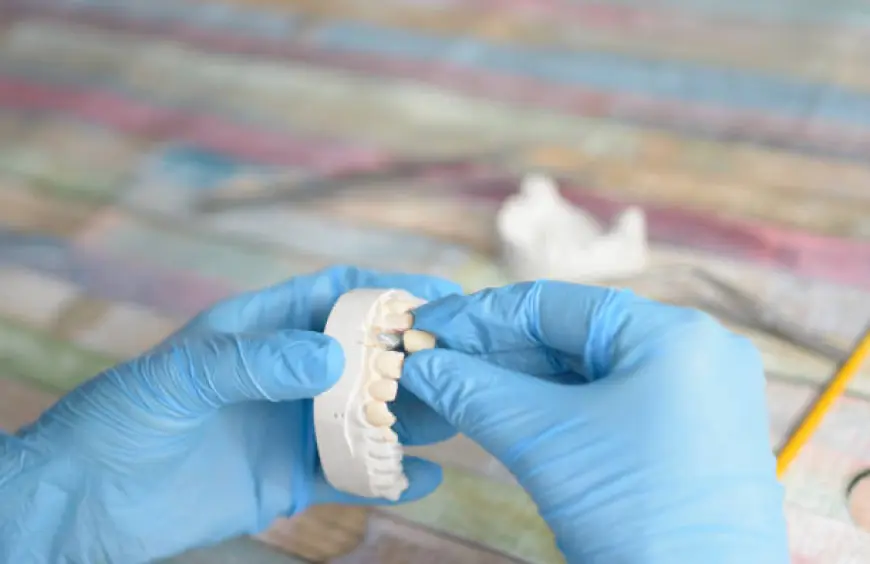Dental Crowns and Bridges to Restore Function and Smiles
Learn how dental crowns and bridges restore teeth's strength and beauty. Explore options, benefits, and care for long lasting results in cosmetic dentistry.

Restore Your Smile with Dental Crowns and Bridges
A healthy smile boosts confidence and function. For many, missing or damaged teeth interfere with daily life. Here, dental crowns and bridges step in. Crowns cover weakened teeth to strengthen them. Meanwhile, bridges close gaps caused by missing teeth. Both options improve chewing, speech, and appearance. Plus, they help protect neighboring teeth. In cosmetic dentistry, these restorations blend health with aesthetics. Treatments often feel natural, and they fit comfortably. Choosing the right solution depends on several factors. Ultimately, dental bridges and crowns offer a durable answer to restore both form and function.
Revitalize Strength with Crowns
Dental crowns act like caps placed over damaged or decayed teeth. They restore shape, strength, and bite function. Crowns may follow root canal therapy or repair large fillings. Many materials are available, like porcelain, metal, or porcelain fused to metal. Porcelain matches your natural tooth color, aiding your dental cosmetic goals. Additionally, crowns distribute chewing forces evenly. That protects the underlying tooth from further damage. Durable and long-lasting crowns can remain intact for many years. Finally, regular dental hygiene helps maintain them. Overall, crowns are reliable solutions for compromised teeth.
Fill Gaps with Bridges
Missing teeth can affect more than just your smile. They change how you chew and speak. They may also shift adjacent teeth. A dental bridge and crown option offers a fixed way to fill those gaps. Bridges use crowns on healthy neighboring teeth as support. A false tooth, or pontic, fills the space. This restores bite and prevents shifting. Also, it restores appearance for a natural look. In dental cosmetics, bridges blend in seamlessly. Moreover, this approach supports facial structure. Lastly, bridges often last ten years or more with proper care.
Cosmetic Dentistry Goals Achieved
Beyond function, many seek cosmetic dentistry to improve their smile. Dental crowns & bridges play key roles here. Matching shape, size, and color helps produce a natural, attractive result. A skilled dentist will blend restorations with your other teeth. This achieves a harmonious and pleasing appearance. Moreover, patients often notice improved confidence both socially and professionally. Crowns may correct crooked or misshapen teeth. Bridges can replace single or multiple teeth. Each case supports dental cosmetics goals. As a result, your smile can become both healthy and beautiful.
Selecting the Right Material
The material choice for dental crowns & bridges depends on several factors. Porcelain offers the best match to natural teeth. It suits front tooth restorations in dental cosmetics. However, metal or porcelain fused to metal may work better for back teeth needing strength. Zirconia offers both toughness and aesthetics. Then, cost and durability come into play. Your dentist will discuss these options based on your oral needs. Also, they’ll factor in any allergies or sensitivities. Every material choice targets a balance of function and appearance.
Treatment Process Overview
A typical dental crowns & bridges process unfolds in stages. First, your dentist evaluates your teeth and takes X-rays. Then, they prepare the teeth by removing decay or shaping them for support. An impression follows so the lab can craft the restoration. Meanwhile, you wear a temporary crown or bridge. During a second visit, the final restoration is fitted and cemented. Your dentist checks color, fit, and bite adjustments. They ensure a smooth finish. Treatment usually wraps in two to three weeks. Plus, it feels natural after that point.
Caring for Your Restorations
Long-term success depends on good oral care. Brush daily with fluoride toothpaste. Also, floss carefully along crown and bridge margins. Special flossing tools can help clean under bridges. Rinse with an antibacterial mouthwash. Schedule regular dental exams and professional cleanings. Avoid biting hard objects like ice or fingernails. These steps reduce the chance of decay or wear. Additionally, treating teeth with care helps your restorations last. With consistent hygiene, dental crowns & bridges may serve you well for decades.
Signs You Need a Crown
Some dental conditions point directly to needing a crown. Large fillings that affect tooth stability are common. Cracked or damaged teeth also need crowns to prevent breakage. After root canal treatment, teeth often become brittle and require crowns. Severe wear from grinding or erosion may also warrant coverage. In dental cosmetics, crowns may enhance a longstanding tooth shape or color problem. Your dentist discusses these needs. That way, you can decide whether a crown improves both function and appearance.
When Bridges Make Sense
Bridges suit adults missing one or more teeth in a row. They work when nearby teeth can anchor the restoration. Bridges avoid the need for implants in some cases. They can be a good option when bone structure limits implant placement. Also, bridges offer quicker results and fewer procedures. However, they require prepping adjacent teeth. Your dentist weighs pros and cons with you. In cosmetic dentistry, bridges aim for a lifelike appearance. You receive a functional, aesthetically pleasing smile restoration.
Implants vs. Bridges
Dental implants present another tooth-replacement choice. Yet implants require surgery and sufficient jawbone support. They also demand longer healing times. Bridges avoid surgery and may cost less initially. Still, implants can preserve bone health over time. Both options restore appearance and bite function. Ultimately, your dentist will help you select between implants or dental bridges and crowns. They’ll consider health, budget, and smile design goals. That ensures you choose the best solution for long term wellness.
Insurance and Cost Considerations
Dental insurance often covers part of the cost for dental crowns & bridges. Coverage varies by plan and type of dentistry. Cosmetic dentistry procedures may have different rules. Your dentist's office can help you estimate costs. Also, ask about flexible payment options or financing if needed. That way, you can treat your teeth without unwanted stress. Understanding insurance and payment arrangements helps with your treatment decision. Planning ahead ensures you get needed care affordably.
Common Misconceptions
Some patients worry that dental crowns and bridges feel unnatural. Yet modern materials and techniques ensure a natural bite feel. Another myth is that these restorations damage healthy teeth. Proper oral hygiene can prevent any harm. People also think they must be replaced often. However, with proper care, crowns and bridges should last many years. Your dentist addresses these myths. You benefit from accurate information that prevents hesitation about treatment.
Conclusion
Dental crowns and bridges restore both appearance and function to your smile. They improve bite, speech, and confidence. Combined with cosmetic dentistry, they deliver a natural, beautiful result. When chosen wisely, materials and processes support lasting outcomes. Good care increases their lifespan. Whether you need to repair a damaged tooth or replace a gap, these options offer reliable solutions. For a healthy, restored smile, consider dental crowns and bridges today.
What's Your Reaction?
 Like
0
Like
0
 Dislike
0
Dislike
0
 Love
0
Love
0
 Funny
0
Funny
0
 Angry
0
Angry
0
 Sad
0
Sad
0
 Wow
0
Wow
0


















































